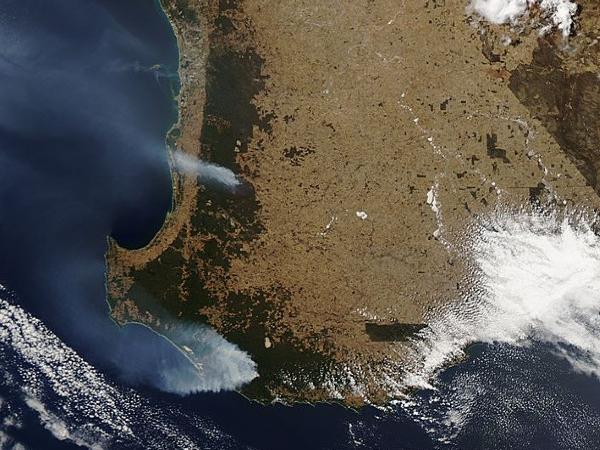Smoke update

Producers who are concerned that smoke in their vineyard may have affected grapes and wine are assessing the potential for smoke taint and managing the risk.
Grape growers and winemakers with these concerns are advised to conduct pre-harvest mini-ferments. The resultant wine can be assessed by sensory and chemical analysis to gauge the potential risk of any smoke taint. It is most important to analyse for the bound smoke phenol compounds as this gives the best estimation of the final concentration of smoke compounds in wine.
Further information and details on mini-ferments, the analysis available for measuring the volatile and bound smoke compounds in grapes and wine, and interpretation of the results are given on the Australian Wine Research Institute (AWRI) and DAFWA websites.
DAFWA Bulletin ‘Effect of smoke in grape and wine production’ is available on request.
Over the last few years, research has given us a much better understanding of the effect of smoke on grapes and wine and the tools to assess and manage the risk of smoke taint.
The following is a summary of our current state of knowledge from DAFWA, AWRI, Curtin University, University of Adelaide, DELWP Vic (formerly DPI Vic) and other sources.
There are several factors that contribute to smoke uptake by grapevines and the risk of smoke taint in grapes and wine.
The main modes of entry of smoke into grapevines are by direct absorption into berries and leaves. Although smoke compounds accumulate in leaves, translocation to the fruit may be minimal. Grapevines of our main varieties are most sensitive to smoke uptake from 7 days post-veraison to harvest.
The concentrations of smoke taint compounds are highest in the berry skins. This has important implications for vineyard and winemaking techniques employed to reduce the concentration of smoke-related aromas, flavours and compounds in wine.
The risk of smoke taint in grapes and wine is highly dependent on the concentration and duration of smoke exposure in the vineyard.
Smoke exposure can be measured quantitatively and continuously by nephelometers. This is important as smoke may fluctuate diurnally.
‘Visibility’ assessments of smoke are unreliable and do not work at night. Nephelometers do not measure the composition of smoke. Smoke can be localised and vary within the vineyard.
Smoke composition is important. Smoke consists of thousands of different compounds. Researchers have identified many of the compounds that are responsible for smoke taint in grapes and wine.
The sensory thresholds of several of these compounds have been measured in specific wines. These compounds may exist in grapes in non-smoke years.
It is important to understand that varieties can have different background or naturally occurring levels when interpreting test results. For example Shiraz grapes and wine have higher background levels of many of these smoke compounds compared to other varieties.
The age of the smoke also seems to be important. These compounds are broken down considerably within four to six hours when smoke is exposed to UV light during the day.
Smoke taint gets worse as wine ages. The concentration of smoke compounds can be 80 to 100 times greater in the wine than in the grapes that have been affected by smoke.
This is because most of the volatile smoke compounds taken in by grapevines become bound to glycosides. The bound form is then released as volatiles by enzyme and acid hydrolysis during fermentation and storage of the wine.
It is most important to measure the bound form in grapes and wine as this gives the best estimation of the final concentration of smoke compounds.
Mini-ferments can be conducted when fruit is 8-9° Baumé (14.5-16.2° Brix). Mini- fermentation will release about 80% of the bound smoke compounds within three to four days. It is not necessary to ferment to dryness to assess the sensory effect of smoke.
Grape and wine samples can be analysed by AWRI or some local analytical services. Sending grapes and wine from WA to South Australia (AWRI) for analysis does not require a Plant Health Certificate if grapes are frozen and wine is in a sealed container. Samples must be accompanied by a ‘Grape material movement and declaration’ form available on the AWRI website.
There are several management techniques that can be employed in the vineyard and winery to reduce the concentration of smoke-related aromas, flavours and compounds in the final wine.
During harvest these include the gentle handling of grapes to keep skin intact, removing leaf material and keeping fruit cool. In the winery considerations include reducing time on skins, separating press fractions and addition of oak and tannin. Reverse osmosis is unsuccessful as this technique only removes the free phenols which are replaced during hydrolysis of the bound forms as the wine ages.
Grape growers and winemakers are using this latest information and tools in their quality systems to ensure that any grapes or wine adversely affected by smoke do not reach the consumer.
For further information or advice please contact Glynn Ward on +61 (0)8 9368 3568, or AWRI (winemaking@awri.com.au).
